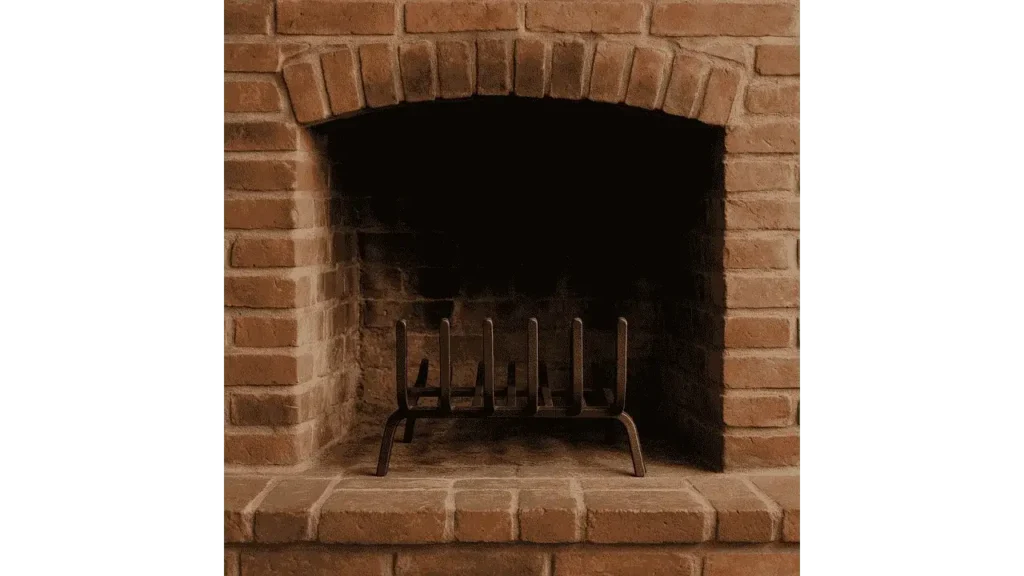If you’ve ever sat in front of a wood-burning fireplace, you’ve probably noticed a metal rack holding the logs. That’s the grate, and while it might seem like a simple accessory, many homeowners wonder whether it’s actually necessary. The short answer is that while you can burn wood without a grate, having one significantly improves how your fireplace functions. From helping your fire burn cleaner to making your space safer, a grate plays a more important role than most people realize. Let’s break down exactly what a fireplace grate does and whether your setup really needs one.
What Is a Fireplace Grate and What Does It Do?
A fireplace grate is a metal frame designed to hold firewood slightly above the firebox floor. This elevation creates airflow beneath the wood, feeding oxygen to the flames and encouraging more complete combustion. As the logs burn, ash falls below the grate, which keeps it out of the way and helps the fire breathe. The grate also keeps the firewood stacked neatly, reducing the chances of a burning log rolling out of the firebox. Simply put, it improves how your fire burns and how easily you can manage it.
Do You Absolutely Need a Grate?
If you have a traditional wood-burning fireplace, especially an open masonry style, using a grate is highly recommended. Without one, your firewood sits flat on the firebox floor, limiting air circulation and causing the fire to smolder or burn unevenly. The absence of a grate can also make it harder to control the fire and manage ash buildup.
For gas fireplaces or gas log sets, the answer is different. Most gas units are designed with built-in burner supports or come with a specific grate as part of the system. In these cases, you should never add a separate grate unless it’s part of the original design. Always follow the manufacturer’s guidelines to avoid creating safety hazards.
In outdoor fireplaces or firepits, a grate is optional but often beneficial. It helps raise the firewood off wet or uneven surfaces and promotes a cleaner burn, even in breezy or damp conditions. Plus, it can make cleanup simpler by allowing ash to collect in one spot beneath the fire.
Pros of Using a Fireplace Grate
The most immediate benefit of using a grate is improved airflow. When logs are lifted off the floor, air can flow freely beneath them, making it easier for the fire to catch and stay lit. This not only creates a hotter flame but also helps the wood burn more completely, producing less smoke and leaving behind finer ash.
Grates also help with fire safety. They hold logs in place, reducing the chance of them shifting, collapsing, or falling forward. For families with children or pets, this added stability provides peace of mind.
Learn More: Inspecting a Fireplace in Simple and Easy Ways!
Another advantage is cleanup. Because the grate holds the wood above the firebox floor, ashes fall below and can be easily scooped out once the fire is done. This separation helps maintain a tidy fireplace and reduces the time needed for post-fire cleaning.
When You Might Not Need One?
If your fireplace is purely decorative or only sees the occasional fire, a grate might not be essential. Infrequent use means you can still enjoy a fire without worrying much about efficiency or ash buildup.
There are also specially designed fireplaces, particularly modern or European models, that are meant to burn wood directly on a heatproof base. In these cases, a grate could interfere with how the unit is supposed to work. Always check your fireplace’s specifications before adding any new component.
Final Takeaways
You don’t absolutely need a grate to burn wood, but having one makes the entire process smoother, safer, and more efficient. It improves airflow, keeps logs stable, and makes cleanup easier. Unless your fireplace is specifically designed to burn without one, a grate is a worthwhile addition that enhances both performance and safety. If your goal is a better, cleaner fire with less hassle, a grate is a smart investment.
- 27 Farmhouse Fireplace Ideas That Bring Warmth & Charm - August 18, 2025
- 25 Fireplace Lighting Ideas to Illuminate Your Hearth - August 7, 2025
- How to Replace an Electric Fireplace Switch? - August 5, 2025



